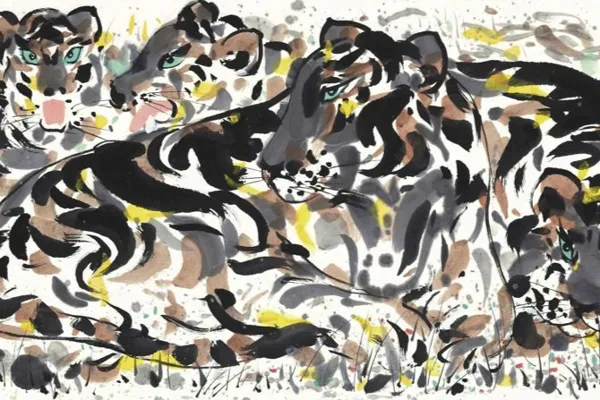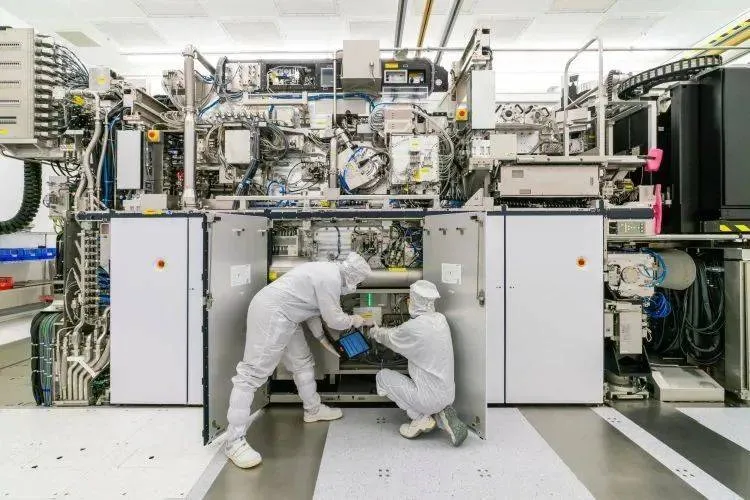To Zao Wou-Ki, Wu Guanzhong... How is the context of Chinese modernist art inherited? From Wu Dayu
This year marks the 120th anniversary of the birth of Wu Dayu, the pioneer of Chinese modernist art, and the 10th anniversary of the death of his disciple, artist Zao Wou-ki.
Recently, "Plowing into Art - A Special Art Exhibition to Commemorate the 120th Anniversary of the Birth of Wu Dayu and the 10th Anniversary of the Death of Zao Wou-Ki" was held at the Urban Creative Art Space of the Putuo District Cultural Center in Shanghai. This exhibition is not only a profound commemoration of the two predecessors of Chinese modern art, but also combs the context of Chinese modernist painting art from one side.
The exhibition's most eye-catching "Masters' Footprints" section presents more than 20 wonderful oil paintings and prints, including Wu Dayu and his disciples Zhao Wuji, Chu Dequn, Wu Guanzhong, Zhang Gongxu, as well as contemporary artists Wang Huaiqing and Feng Xiaoming who were directly influenced by them. Artworks by others.
Wu Dayu is a master of early abstract painting in China and is known as "the banner of Hangzhou Art College", "extraordinary color painter" and "pioneer among pioneers". He established the Chinese abstract painting and theory through the three comprehensive aesthetic forms of "power, light, color, and rhythm". While teaching at the National Hangzhou Art College, he also trained Zao Wou-ki, Chu Teh-chun, and Wu Guanzhong, who would become famous artists in the future.
Wu Dayu pays attention to sincerity and nature in his paintings. Both "Waiting" and "Flowers" on display were created in the 1950s. "Waiting" expresses some of Wu Dayu's inner expectations, while "Flowers" reveals a unique poetic flavor in the flow of colors.
Zao Wou-Ki devoted his life to the modern interpretation of the Chinese artistic spirit. He was good at skillfully integrating the traditional Chinese artistic spirit with modern Western aesthetic tastes, making a unique contribution to the cultural exchange between the East and the West. Although many of Zao Wou-Ki's abstract works on display this time are prints, his artistic momentum and profound implications can still be seen.
Wu Guanzhong's rare color and ink painting "Tiger" attracted many viewers. Through the combination of lines and color blocks, this work shows four tigers hidden in the grass, which is quite distinctive.
A total of 14 young and middle-aged people including Yan Feixiang, Bao Ying, Xi Yaoyi, Pang Fei, Shao Jijiong, Yu Xingze, Luo Wei, Wu Lifan, Xu Zengying, Ma Junying, Su Yingchun, Jiang Yin, He Guomeng and Liu Yujun were selected for this exhibition. The artist's abstract paintings constitute the chapter "Contemporary Presentation of Modernist Painting Context".
The last chapter of the exhibition, "The Last Paris," displays the photography works that Shanghai photographer Dong Ming took during his trip to Paris in 2006 that reflect the creation and life of Zhao Wou-Ki and Chu Teh-Chun in their later years. These exclusive photos show a side view of the final days of the lives of two artistic masters.
According to Zhang Lixing, the curator of this exhibition and vice chairman of the Shanghai Literary Critics Association, Jiangnan is the birthplace of modern Chinese art. Shanghai Art College and Suzhou Art College founded by Liu Haisu and Yan Wenliang, Wu Dayu, Zao Wou-ki, and Zhu Dequn , Wu Guanzhong, Zhang Gongxu and others once taught and studied at the National Hangzhou Art College, which was once the center for teaching Chinese modernist art. Almost all the famous modern arts in the history of Chinese art have a close connection with the Jiangnan region. The works of these masters of art have allowed the world to see the uniqueness and extraordinaryness of Chinese modern art. Their influence continues to this day, and they have also played a decisive role in enlightening and promoting the development of modern art in today's ascendant new era.
The exhibition will run until November 10 and is free and open to the public.





